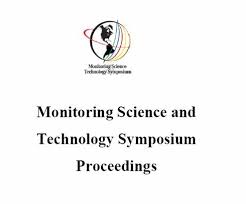Ver ítem
- xmlui.general.dspace_homeCentros Regionales y EEAsCentro Regional Patagonia SurEEA Santa CruzPresentaciones a congresosxmlui.ArtifactBrowser.ItemViewer.trail
- Inicio
- Centros Regionales y EEAs
- Centro Regional Patagonia Sur
- EEA Santa Cruz
- Presentaciones a congresos
- Ver ítem
Monitoring Patagonian Rangelands: The MARAS System
Resumen
Rangelands in Patagonia have been managed with a lack of regulation since the introduction of sheep in the late 1880’s. Most rangelands are under private freehold in ‘estancias’ and the rest are public and managed by small subsistence-type farmers.
Natural resources of rangelands are property of the provincial states according to the Constitution, but they have no mandate or resources to monitor their condition and public support funds have not been tied
[ver mas...]
Rangelands in Patagonia have been managed with a lack of regulation since the introduction of sheep in the late 1880’s. Most rangelands are under private freehold in ‘estancias’ and the rest are public and managed by small subsistence-type farmers.
Natural resources of rangelands are property of the provincial states according to the Constitution, but they have no mandate or resources to monitor their condition and public support funds have not been tied to proper management. Government agencies
designed in the 1990’s two range evaluation systems hat have been applied extensively but they focus on short time - scale processes to allocate forage resources at the “estancia” scale. The need of a regional monitoring system to evaluate rangeland condition and trend is slowly being recognized by governments and farmers, and scientists of Patagonia have been discussing a possible unified methodology. The system has been named MARAS and is based on Australia’s WARMS (Holm 1998) and other similar methods. Lines of point interception and frequency samplers are used to evaluate herbaceous vegetation, Camfield lines to evaluate shrubs and patches, surface sampling, and estimates of soil condition. Ground observation points would be set one per cadastral unit (about 20.000 ha) and evaluated at five-year intervals. State funding has been obtained in 2004 to put in place the first monitors, and to design a web data base that would give selective access to the information to federal, provincial, or non-governmental institutions. The main challenge of the system is to assure funding through decades in order to assess long time-scale processes. We expect that ecocertification market requirements will induce farmers to support it, and that the new trend of public funding included in a new sheep promotion law will allow the system to continue.
[Cerrar]

Fuente
Monitoring Science and Technology Symposium: Unifying Knowledge for Sustainability in the Western Hemisphere Proceedings RMRS-P-42CD. Fort Collins, CO: U.S. Department of Agriculture, Forest Service, Rocky Mountain Research Station. p. 188-193
Fecha
2006
Editorial
U.S. Department of Agriculture, Forest Service
Formato
pdf
Tipo de documento
documento de conferencia
Palabras Claves
Derechos de acceso
Abierto
 Excepto donde se diga explicitamente, este item se publica bajo la siguiente descripción: Creative Commons Attribution-NonCommercial-ShareAlike 2.5 Unported (CC BY-NC-SA 2.5)
Excepto donde se diga explicitamente, este item se publica bajo la siguiente descripción: Creative Commons Attribution-NonCommercial-ShareAlike 2.5 Unported (CC BY-NC-SA 2.5)


